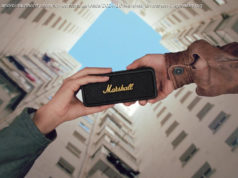Apple and Samsung continue their epic smartphone war, but is there a generation gap?
Apple vs Samsung has been the biggest, longest-running rivalry in the smartphone industry. Ever since the launch of the first Samsung Galaxy S in March 2010, there’s been a constant back and forth between these massive manufacturers. That rivalry is perhaps best represented today by the iPhone 12 and the Samsung Galaxy S21, but here we’re going to compare Apple’s latest to the company’s older S20 model. These two mainstream phones are packed full of high end components, svelte design flourishes, and advanced software without topping out in the price department. But they take very different routes to smartphone mastery. So which is the best phone for you – the iPhone 12 or the Samsung Galaxy S20? We’ve been using both for a number of months now, so an in depth breakdown is in order. These two phones landed at opposite ends of 2020, the Samsung Galaxy S20 in March and the iPhone 12 in October. That’s a gap of more than half a year, which is an age in smartphone terms. This makes the consideration of relative pricing rather complicated. The Galaxy S20 is frequently discounted this deep into its life, while the iPhone 12 is still going for the full RRP. The iPhone 12 starts from $799 / £799 / AU$1,349 for the 64GB model, moving up to $849 / £849 / AU$1,429 for 128GB and $949 / £949 / AU$1,599 for 256GB. If we’re comparing launch prices, the 5G-ready Galaxy S20 arrived with a tag for $999 / £899 / AU$1,499. Some territories, like the UK and Australia, also got a 4G-only version for £799/AU$1,349. At the time of writing, however, Amazon is selling the S20 5G for $800, which is a saving of $200. And in the UK, we’ve found the Galaxy S20 5G for £764, which represents a meaty £135 price cut. These chunky price cuts have been initiated for a clear reason, of course – there’s the new Galaxy S21 range, which includes the Galaxy S21 Ultra and Galaxy S21 Plus. You might want to factor that in to your purchase decision. Though they may be longstanding rivals, the pleasing thing about both the iPhone and Galaxy S ranges is that they’ve developed to look remarkably different over the years. The Samsung Galaxy S20 is the archetypal modern Android flagship – an all-screen device with glass to the front and back, a cool metal chassis, and curved edges to the front and back. It’s pleasing to see that the display plunges away far less dramatically than before, making the S20 much more practical to use than previous phones, though the display is still hardly flat. Conversely, the iPhone 12 marks a return to the sharp industrial design language of the iPhone 4 and iPhone 5. Its edges are dead flat and sit at a strict 90 degree angle to the equally flat front and rear surfaces. There’s a similar choice of glass and aluminum materials here, though the iPhone 12 has a much more muted range of finishes. Its simple shades of Black, White, Red, Green, and Blue all come with corresponding matte rims. The Galaxy S20 measures 151.7 x 69.1 x 7.9mm versus the iPhone 12’s 146.7mm x 71.5mm x 7.4mm. Despite being taller and fatter than the iPhone 12, the Galaxy S20 actually feels a little thinner in the hand, thanks no doubt to those tapered edges. Despite their different approaches to design, there’s just a single gram in between these two phones – 163g for the Galaxy S20,164g for the iPhone 12. In broader market terms, these are two fairly small phones that won’t fill or weigh down your pockets. If we’re talking toughness toughness, both phones are water resistant to the IP68 standard. The iPhone 12, however, gains a custom nano-crystalline Ceramic Shield screen, which apparently makes it four times stronger than usual. There are a couple of other design differences to note. Apple goes with its signature wide notch, which digs into the top of the screen and grants facial recognition for access and payment authentication. The Galaxy S20 goes with a much less intrusive central hole punch notch, which is less obstructive of video content. But it can’t scan your face, and it relies on a somewhat erratic in-display fingerprint sensor for its authentication. Considering the relative merits of these two displays is an interesting exercise, because Samsung supplies many of Apple’s iPhone 12 screens alongside those of its own handset. The fundamentals are quite similar. With the iPhone 12 you’re getting a 6.1-inch Super Retina XDR OLED screen. The Samsung Galaxy S20 gives you a 6.2-inch Dynamic AMOLED.






